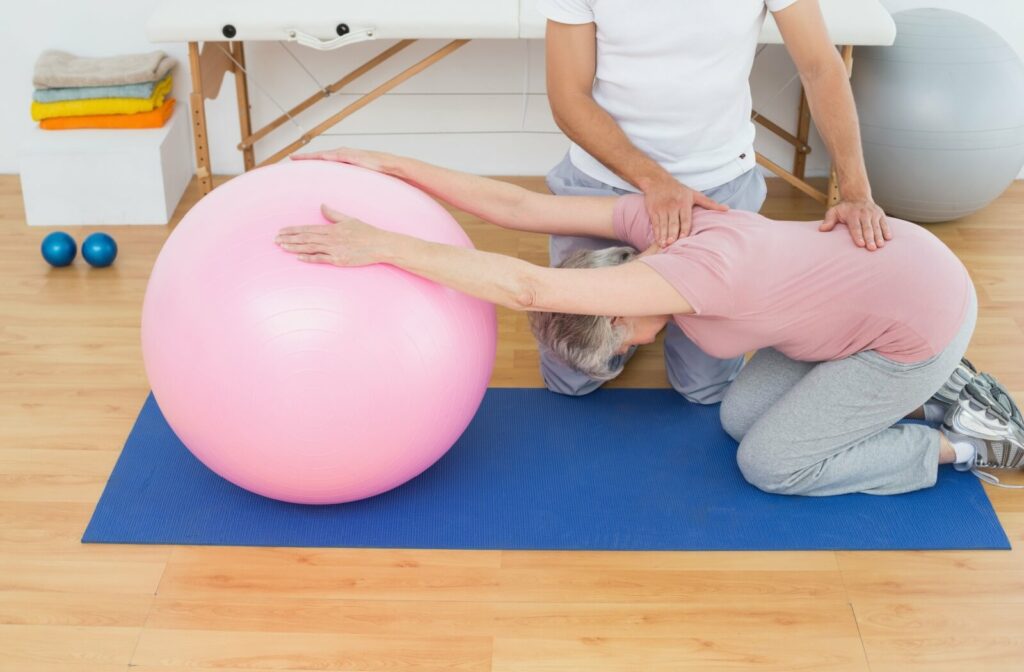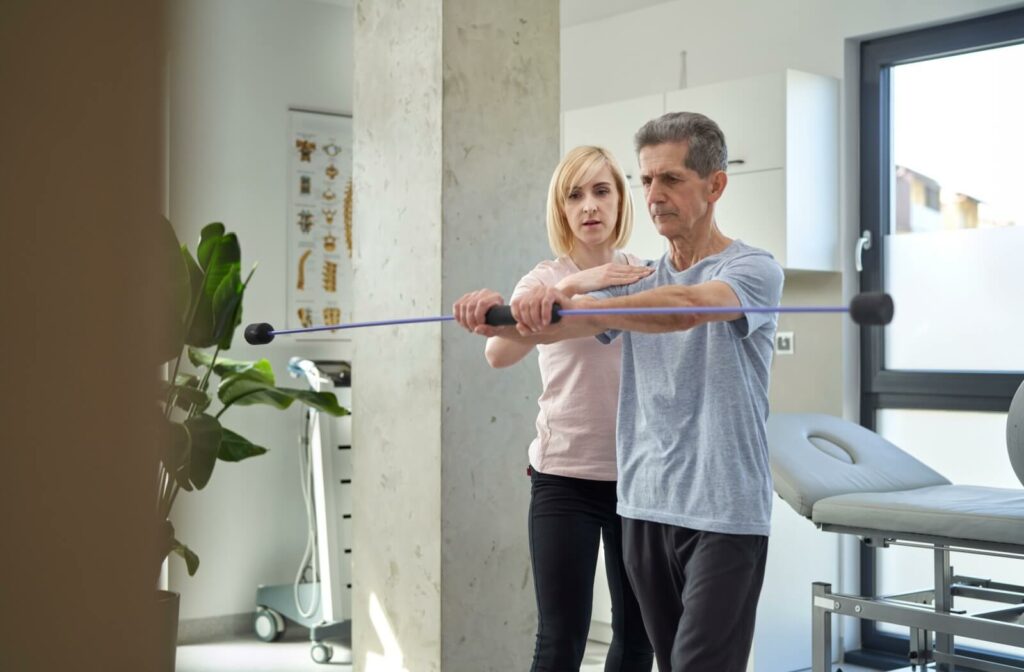Balance issues are a common challenge for many seniors and a primary concern for caregivers. Falls can lead to severe injuries, hospitalizations, and a loss of independence for older adults.
However, occupational therapy (OT)–including therapeutic exercises, sensory integration techniques, postural training, adaptive equipment, and functional task training–provides a valuable way to address balance problems and help seniors regain stability and confidence in their daily activities.
These OT interventions promote safety, mobility, and quality of life and are often accessible in senior living communities.
What Is Occupational Therapy (OT)?
Occupational therapy is a specialized form of healthcare designed to help individuals achieve independence in daily life. For seniors, OT often focuses on improving physical, cognitive, and emotional functions to make everyday activities more manageable.
Regarding balance, OT aims to enhance physical stability and help seniors perform functional movements with greater security.
How Does OT Help with Balance?
Occupational therapists assess an individual’s specific balance-related challenges, such as muscle weakness, poor posture, or sensory deficits. They then create personalized interventions that target these issues.
OTs combine therapeutic exercises, innovative tools, and activity-based strategies to help seniors build strength, improve coordination, and reduce the risk of falls or accidents.
5 Types of OT Interventions for Balance
1. Therapeutic Exercises for Improved Balance
What is it?
Therapeutic exercises form the foundation of OT interventions for balance. These exercises are designed to strengthen muscles, enhance coordination, and improve proprioception (the body’s awareness of its position in space).
How does it help?
Through targeted exercises, seniors can improve their ability to stand, walk, and transition between postures. Building core and leg strength, these exercises help create a stable base that minimizes the likelihood of falls.
Examples:
- Strength-building exercises, like seated leg lifts, can improve lower-body strength.
- Stretching routines that enhance flexibility and reduce muscle tension.
- Balance-focused tasks like standing on one foot or walking heel-to-toe with therapist supervision.
2. Sensory Integration Techniques in Occupational Therapy
What is it?
Sensory integration techniques in OT involve stimulating and engaging various sensory systems, such as the vestibular (balance-related), visual, and proprioceptive systems, to improve the body’s ability to process sensory input.
How does it help?
These techniques help seniors better interpret signals from their environment and body, enabling them to react appropriately and maintain balance in situations with uneven surfaces or unexpected movements.
Examples:
- Vestibular exercises, such as seated rocking activities, can improve balance perception.
- Visual-motor tasks like tracking moving objects with the eyes while maintaining balance.
- Proprioceptive-focused activities include walking on textured surfaces (e.g., foam or grass).
3. Postural Training & Balance Enhancement
What is it?
Postural training focuses on proper alignment and body mechanics to promote stability during everyday movements.
How does it help?
Good posture reduces strain on muscles and joints while maintaining a steady center of gravity. This intervention can significantly reduce the risk of falls and improve overall balance.
Examples:
- Core stability training to support better standing and sitting postures.
- Mirror exercises are where seniors practice correcting their posture by observing themselves.
- Dynamic posture drills include transitioning smoothly from sitting to standing.
4. Adaptive Equipment for Fall Prevention
What is it?
Adaptive equipment includes tools and devices to assist seniors with mobility and balance. Occupational therapists evaluate each individual’s needs and recommend specific equipment to enhance safety.
How does it help?
These devices provide extra support, reduce fall risks, and empower seniors to complete daily activities independently.
Examples:
- Use walkers or canes for improved stability while walking.
- Grab bars and bathroom safety rails to assist with transfers in slippery environments.
- Non-slip footwear or mats to prevent slips on smooth surfaces.
5. Functional Task Training for Balance & Mobility
What is it?
Functional task training focuses on practicing real-life tasks involving balance and movement, such as dressing, cooking, or navigating stairs. These activities are deliberately chosen based on the individual’s daily routine and goals.
How does it help?
This type of training directly translates to the senior’s everyday life, ensuring they feel confident performing everyday activities. It improves physical balance and reinforces mental readiness for such tasks.
Examples:
- Simulated cooking tasks where seniors practice reaching for items and moving while balancing.
- Stair-climbing drills to build confidence and stability on steps.
- Gait training exercises to improve walking form and reduce instances of imbalance.
How Senior Living Provides Opportunities for OT

Senior living communities can play a vital role in supporting occupational therapy for balance through both structured programs and daily environments.
- On-site therapy services: Many senior living communities employ occupational therapists who provide personalized and group therapy programs.
- Supportive environments: Senior living communities are designed with mobility and safety in mind, reducing hazards like uneven flooring or poorly lit areas. This creates an ideal space for implementing OT practices.
- Social connection: Activities like group exercises or fall prevention workshops allow residents to practice skills in a supportive, social setting, promoting balance and emotional well-being.
Occupational therapists in these settings can also regularly evaluate seniors’ needs and progress, making necessary adjustments to their interventions over time.
Elevating Confidence & Stability for Seniors
Occupational therapy interventions for balance empower seniors to maintain independence, reduce fall risks, and regain confidence in their daily activities. From therapeutic exercises to adaptive tools and functional task training, these targeted strategies offer caregivers peace of mind and seniors the freedom to move safely and confidently.
Meadowcrest at Middletown supports holistic senior health, from occupational training and active living, to cognitive health and training and healthy eating. Contact us today to learn how our community can help your loved one thrive.





